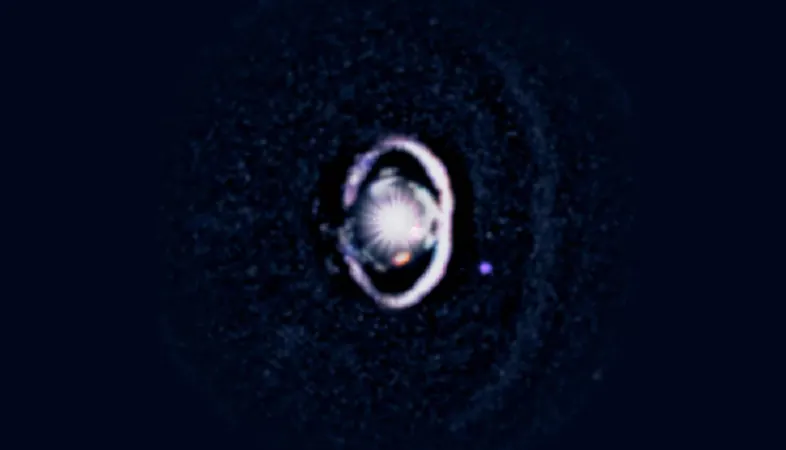
Astronomers Capture Stunning Image of Baby Planet Outside Our Solar System
2025-09-10
Author: Ming
A Groundbreaking Discovery
In an extraordinary breakthrough, a team of astronomers has detected the first-ever image of a baby planet forming outside our solar system, nestled within a clearing in a dust and gas disk that resembles a cosmic snowplow's path!
Meet the Experts Behind the Discovery
Led by Laird Close from the University of Arizona and Richelle van Capelleveen, an ambitious graduate student at Leiden Observatory, this pioneering research utilized cutting-edge technology. The discovery was made possible through the University of Arizona's MagAO-X extreme adaptive optics system, as well as the Magellan Telescope in Chile and the Very Large Telescope at the European Southern Observatory.
Insights from Another World
For years, astronomers have scrutinized numerous planet-forming disks, all of which exhibit intriguing gaps, suggesting protoplanets—miniature planets—might be forming within these cosmic arenas. Until now, only three young protoplanets were identified, but never within these stark gaps that signal their presence.
A Tension in Astronomy Confirmed
Close underscores the significance of this discovery, stating that it validates longstanding theories about protoplanet formation. This find alleviates a critical point of tension within the scientific community, which previously questioned whether these gaps in disks were, in fact, the product of forming planets.
The Birth of Our Own Solar System
Reflecting on the dawn of our own solar system, which started from a similar dust disk 4.5 billion years ago, Close points out that discovering young planetary systems like WISPIT-2 provides invaluable insights into our own origins.
MagAO-X: A Technological Marvel
The researchers capitalized on the MagAO-X system's ability to overcome atmospheric disturbances that often blur celestial images. Close and his team focused on a specific light signature, known as hydrogen alpha, emitted by young planets consuming hydrogen gas, allowing them to identify protoplanets effectively.
Striking Gold in the Stars
When examining WISPIT-2's disk, they spotted a glowing dot within its dark gap—a clear indication of a protoplanet. This exciting discovery also revealed a second planetary candidate, just waiting to be explored.
A Glimpse into the Future of Planet Formation
WISPIT 2b, as the primary protoplanet is named, is a glimpse into what our own Jupiter and Saturn may have looked like in their formative years. With substantial masses—about five and nine times that of Jupiter, respectively—these celestial bodies could dramatically reshape our understanding of planet formation.
Where Do We Go From Here?
Building on this momentum, the team has set its sights on further investigating this fascinating system. They believe that in a universe short on young disks, capturing this moment in time provides a rare window into the life cycle of planets and their formation.
Support from the Cosmic Community
This remarkable research has gained momentum thanks to funding from NASA's eXoplanet Research Program and other scientific grants, highlighting the collaborative nature of space exploration.
Conclusion: A Cosmic Celebration!
As we celebrate this celestial achievement, astronomers look forward to unveiling more mysteries of the universe, offering us clearer insights into how planets like our own Earth came to be.


 Brasil (PT)
Brasil (PT)
 Canada (EN)
Canada (EN)
 Chile (ES)
Chile (ES)
 Česko (CS)
Česko (CS)
 대한민국 (KO)
대한민국 (KO)
 España (ES)
España (ES)
 France (FR)
France (FR)
 Hong Kong (EN)
Hong Kong (EN)
 Italia (IT)
Italia (IT)
 日本 (JA)
日本 (JA)
 Magyarország (HU)
Magyarország (HU)
 Norge (NO)
Norge (NO)
 Polska (PL)
Polska (PL)
 Schweiz (DE)
Schweiz (DE)
 Singapore (EN)
Singapore (EN)
 Sverige (SV)
Sverige (SV)
 Suomi (FI)
Suomi (FI)
 Türkiye (TR)
Türkiye (TR)
 الإمارات العربية المتحدة (AR)
الإمارات العربية المتحدة (AR)